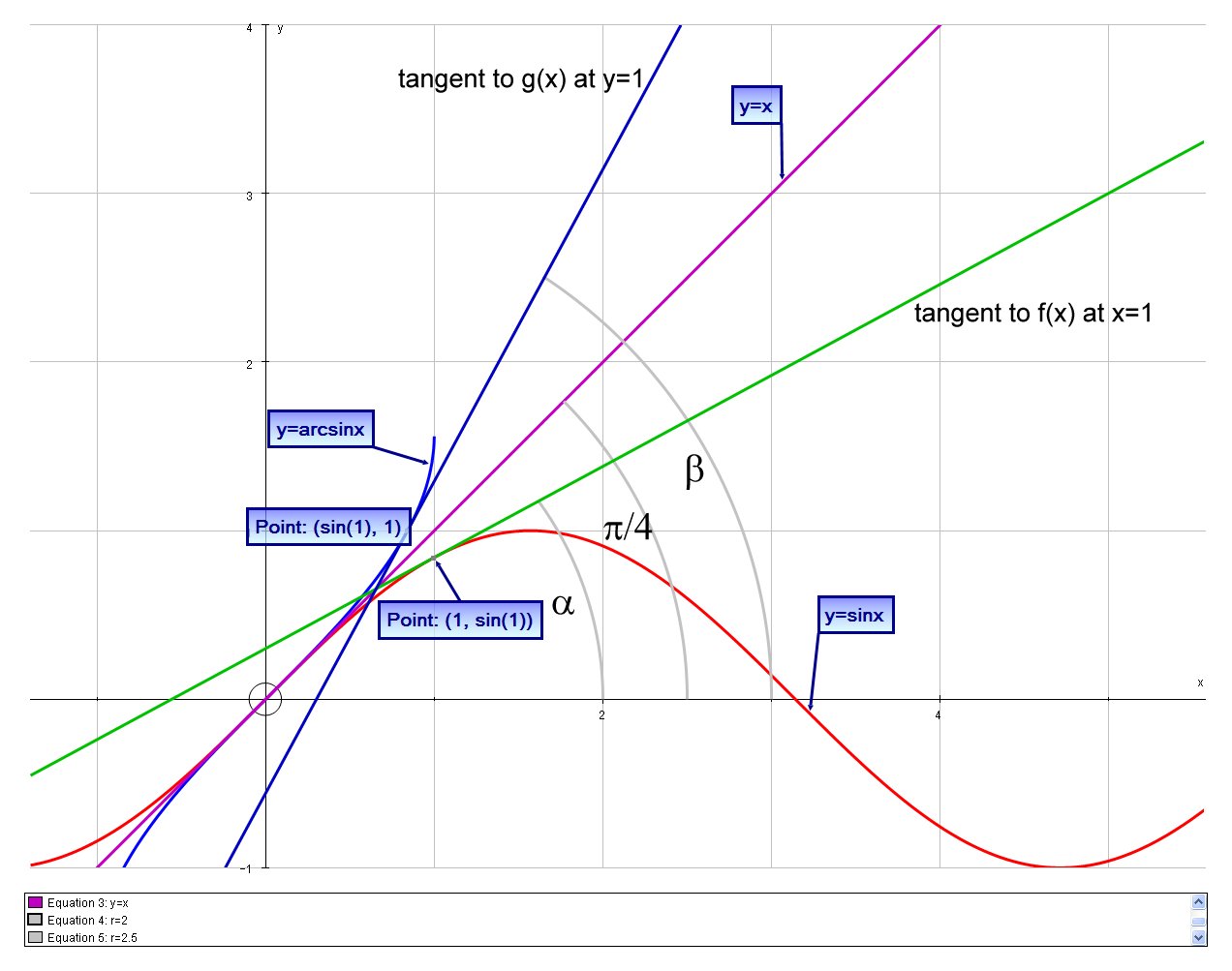Show that the tangent to #f(x) = sinx# at #x=1# and the tangent to #g(x) = sin^-1x# at #y=1# are equally inclined to #y=x#?
1 Answer
It should be intuitive that this is true of any functions that fit this criteria as the functions are inverses and so reflected in the line
In this specific case we can prove the result:
# f(x) = sinx #
Differentiating wrt
# f'(x) = cosx #
When
And for the inverse:
# g(x) = sin^-1(x) #
When
# :. sin^-1(x) = 1 #
# :. x = sin1 #
Differentiating wrt
# g'(x) = 1/sqrt(1-x^2) #
And so, when
# g'(sin1) = 1/sqrt(1-sin^2 1) #
# g'(sin1) = 1/sqrt(cos^2 1) #
# g'(sin1) = 1/cos 1 #
We can now calculate the inclinations of the tangents, Suppose:
the tangent line at
#x=1# for#f(x)# is at an inclination of#alpha#
the tangent line at#y=1# for#g(x)# is at an inclination of#beta#
the tangent line of#y=x# is at an inclination of#pi/4#

Then (by definition of the tangent and relation to the derivative), at those points;
# tan alpha = cos1 # ;# tan beta = 1/cos1 # and# tan (pi/4) = 1 #
So our aim is to show that the angle between one tangent and #y=x is the same as the other. ie that:
# beta - pi/4 = pi/4 - alpha => alpha + beta = pi/2#
Using
# tan(alpha+beta) = (tanalpha+tanbeta)/(1-tanalphatanbeta)#
# " " = (cos1 +1/cos1)/(1-cos1 1/cos1)#
# " " = (cos1 +1/cos1)/0#
# " " = oo#
# :. alpha + beta = pi/2 # QED
Or if you prefer, using
# tan(beta-pi/4) = (tanbeta+tan(pi/4))/(1-tanbetatan(pi/4))#
# " " = (1/cos1-1)/(1+1/cos1) #
# " " = ((1-cos1)/cos1) / ((cos1+1)/cos1) #
# " " = (1-cos1) / (cos1+1) #
# tan(pi/4-alpha) = (tan(pi/4)-tanalpha)/(1+tan(pi/4)tanalpha) #
# " " = (1-cos1)/(1+cos1) #
# " " = tan(beta-pi/4) # QED

